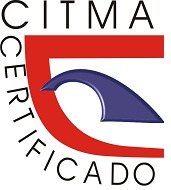Knime Nodes for model adjustment by using BICIAM
Keywords:
BiCIAM; Knime; model optimization; model adjustment.Abstract
Many problems in real life can be expressed using a mathematical model to describe them, through expressions with parameters that must be adjusted to each specific situation. The adjustment of these models often implies the solution of an optimization problem that looks for the values of the parameters that minimize the difference between what the model indicates and the real data. At present, to solve optimization problems it can use metaheuristics, but the tools that are used generally require programming skills. BiCIAM is a class library that solves optimization problems using metaheuristics, but only people with programming skills can make use of it. In this work we propose the implementation of new nodes in Knime that optimize and adjust mathematical models, using BiCIAM. With these nodes, optimization models can be solved without the need for programming, non-linear predictive models can be adjusted and the data can be analyzed using the statistical nodes provided by Knime.
References
Alba, E., Almeida, F., Blesa, M., Cabeza, J., Cotta, C., Díaz, M., . . . Xhafa, F. (2002). MALLBA: A Library of Skeletons for Combinatorial Optimisation. Presentado en: Euro-Par 2002, Parallel Processing, 8th International Euro-Par Conference, Paderborn, Germany.
Bernardin, L., Chin, P., DeMarco, P., Geddes, K., Hare, D., Heal, K., . . . Monagan, M. (2011). Maple programming guide: Citeseer.
Berthold, M. R., Cebron, N., Dill, F., Gabriel, T. R., Kötter, T., Meinl, T., . . . Wiswedel, B. (2009). KNIME-the Konstanz information miner: version 2.0 and beyond. AcM SIGKDD explorations Newsletter, 11(1), 26-31.
Biembengut, M. S., y Hein, N. (2004). Modelación matemática y los desafíos para enseñar matemática. Educación matemática, 16(2), 105-125.
Binumol, S., Rao, S., & Hegde, A. V. (2020). Multiple Nonlinear Regression Analysis for the Stability of Non-overtopping Perforated Quarter Circle Breakwater. Journal of Marine Science and Application, 19(2), 293-300. doi:10.1007/s11804-020-00145-3
Brakke, K. A. (1994). Surface evolver manual. Mathematics Department, Susquehanna Univerisity, Selinsgrove, PA, 17870(2.24), 20.
Brauer, F. (2005). The Kermack–McKendrick epidemic model revisited. Mathematical biosciences, 198(2), 119-131.
Bussieck, M. R. & Meeraus, A. (2004). General Algebraic Modeling System (GAMS). In J. Kallrath (Ed.), Modeling Languages in Mathematical Optimization (pp. 137-157). Boston, MA: Springer US.
Ceruto, T., Lapeira, O., Tonch, A., Plant, C., Espin, R., & Rosete, A. (2014). Mining medical data to obtain fuzzy predicates. Lecture Notes in Computer Science. Vol. 8649 (pp. 103-118): Springer.
Clewett, A. J. (1986). The Minitab Statistical Package. Journal of the Operational Research Society, 37(12), 1201-1202. doi:10.1057/jors.1986.204
Covid19CubaData. (2020, 2 de junio de 2020). Tablero estadístico interactivo sobre la COVID-19 en Cuba 2020. Recuperado de https://covid19cubadata.github.io/#cuba
Cunningham, K. y Schrage, L. (2004). The LINGO Algebraic Modeling Language. In J. Kallrath (Ed.), Modeling Languages in Mathematical Optimization (pp. 159-171). Boston, MA: Springer US.
Chapra, S. C., Canale, R. P., Ruiz, R. S. G., Mercado, V. H. I., Díaz, E. M., y Benites, G. E. (2007). Métodos numéricos para ingenieros (Vol. 5). México: McGraw-Hill.
Dreo, J., Aumasson, J.P., Tfaili, W., & Siarry, P. (2007). Adaptive learning search, a new tool to help comprehending metaheuristics. International Journal on Artificial Intelligence Tools, 16(03), 483-505.
El observador. (2020, 18 Mayo de 2020). COVID-19: Estadísticas. Recuperado de https://observador.cr/covid19-estadisticas/
Fajardo, J. (2015). Soft Computing en Problemas de Optimización Dinámicos. (Ph.D. Thesis), Universidad de Granada, España.
Fajardo, J., Masegosa, A. D., & Pelta, D. A. (2016). An algorithm portfolio for the dynamic maximal covering location problem. Memetic Computing, 9(2), 141-151. doi:10.1007/s12293-016-0210-5
Fajardo, J., Porras, C., Sanchez, L., & Estrada, D. E. (2017). Software tool for model and solve the maximum coverage location problem, a case study: Locations police officers. Revista de Investigación Operacional (RIO), 38(2), 141-149.
Friswell, M., & Mottershead, J. E. (2013). Finite element model updating in structural dynamics (Vol. 38): Springer Science & Business Media.
Garcia-López, J. M., Ilchenko, K., & Nazarenko, O. (2017). Optimization Lab Sessions: Major Features and Applications of IBM CPLEX, Cham.
Gay, D. M. (2015). The AMPL Modeling Language: An Aid to Formulating and Solving Optimization Problems, Cham.
Gupta, A. K. (2014). Numerical Methods using MATLAB (1st ed.). USA: Apress.
Infante Abreu, A. L., Díaz Hernández, R., André Ampuero, M., Rosete Suárez, A., Fajardo Calderín, J., y Escalera Fariñas, K. (2015). Solución al problema de conformación de equipos de proyectos de software utilizando la biblioteca de clases BICIAM. Revista Cubana de Ciencias Informáticas, 9, 126-140.
Jaszkiewicz, A., & Dąbrowski, G. (2010). MOMHLIB++: Multiple Objective Metaheuristics Library in C++. Recuperado de http://www.swmath.org/software/4708
López Jiménez, A. P., Espert Alemany, V., Carlos Alberola, M., y Martínez Solano, F. J. (2003). Metodología para la calibración de modelos de calidad de aguas. Ingeniería del agua, 10(4), 501-516.
Maischberger, M. (2011). COIN-OR METSlib a Metaheuristics Framework in Modern C++. Firenze University. Recuperado de https://projects.coin-or.org/metslib
Medina Mendieta, J. F., Cortés Cortés, M. E., Cortés Iglesias, M., Pérez Fernández, A. d. C., y Manzano Cabrera, M. (2020). Estudio sobre modelos predictivos para la COVID-19 en Cuba. MediSur, 18(3), 431-442.
Mendieta, J. FM., Cortés, M. E. C., y Iglesias, M. C. (2020). Ajuste de curvas de crecimiento poblacional aplicadas a la COVID-19 en Cuba. Revista Habanera de Ciencias Médicas, 19, 3.
Mysovskikh, V. I. (2004). Computer Algebra Systems and Symbolic Computations. Journal of Mathematical Sciences, 120(4), 1613-1617. doi:10.1023/B:JOTH.0000017891.69062.9c
Talbi, E.-G. (2009). Metaheuristics: from design to implementation (Vol. 74): John Wiley & Sons.
Tippmann, S. (2015). Programming tools: Adventures with R. Nature News, 517(7532), 109.
Torres, I., Rosete, A., Cruz, C., y Verdegay, J. L. (2016). Solving a multiobjective truck and trailer routing problem with fuzzy constraints Fuzzy Logic in Its 50th Year (Vol. 341, pp. 237-255): Springer.
Valle, J. A. M. (2020). Predicting the number of total COVID-19 cases and deaths in Brazil by the Gompertz model. Nonlinear Dynamics, 102(4), 2951-2957. doi:10.1007/s11071-020-06056-w
Villalobos-Arias, M. (2020). Estimation of population infected by Covid-19 using regression Generalized logistics and optimization heuristics. arXiv preprint arXiv:2004.01207.
Walpole, R. E., Myers, R. H., Myers, S. L., y Ye, K. (2012). Probabilidad y estadística para ingeniería y ciencias. Norma, 162, 157.
Zhu, J. (2003). DEA Excel Solver Quantitative Models for Performance Evaluation and Benchmarking: Data Envelopment Analysis with Spreadsheets and DEA Excel Solver (pp. 263-283). Boston, MA: Springer US.
Downloads
Published
How to Cite
Issue
Section
License
Copyright (c) 2021 Taday González Chaveco, Cynthia Porras Nodarse, Alejandro Rosete Suárez

This work is licensed under a Creative Commons Attribution-NonCommercial 4.0 International License.













